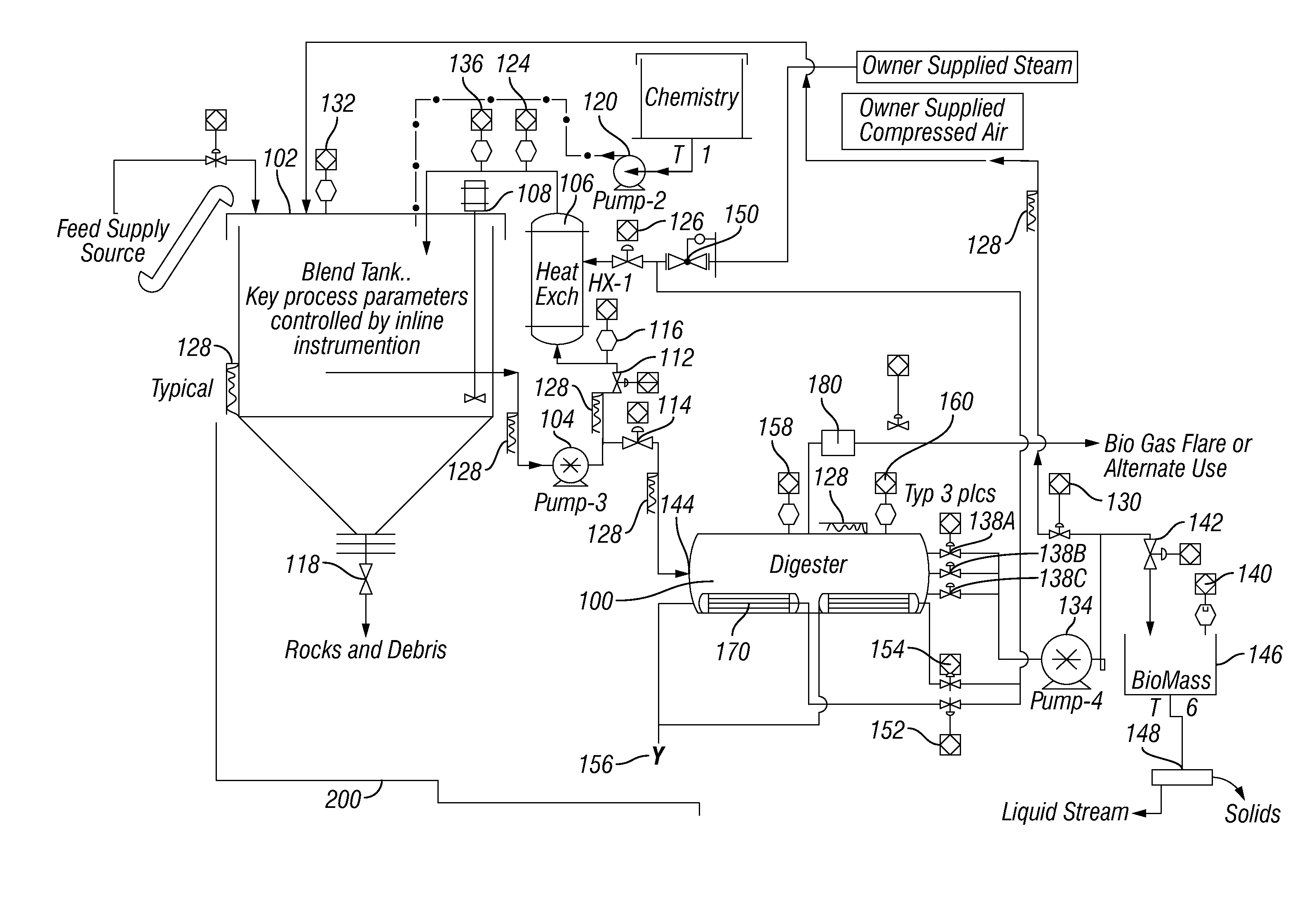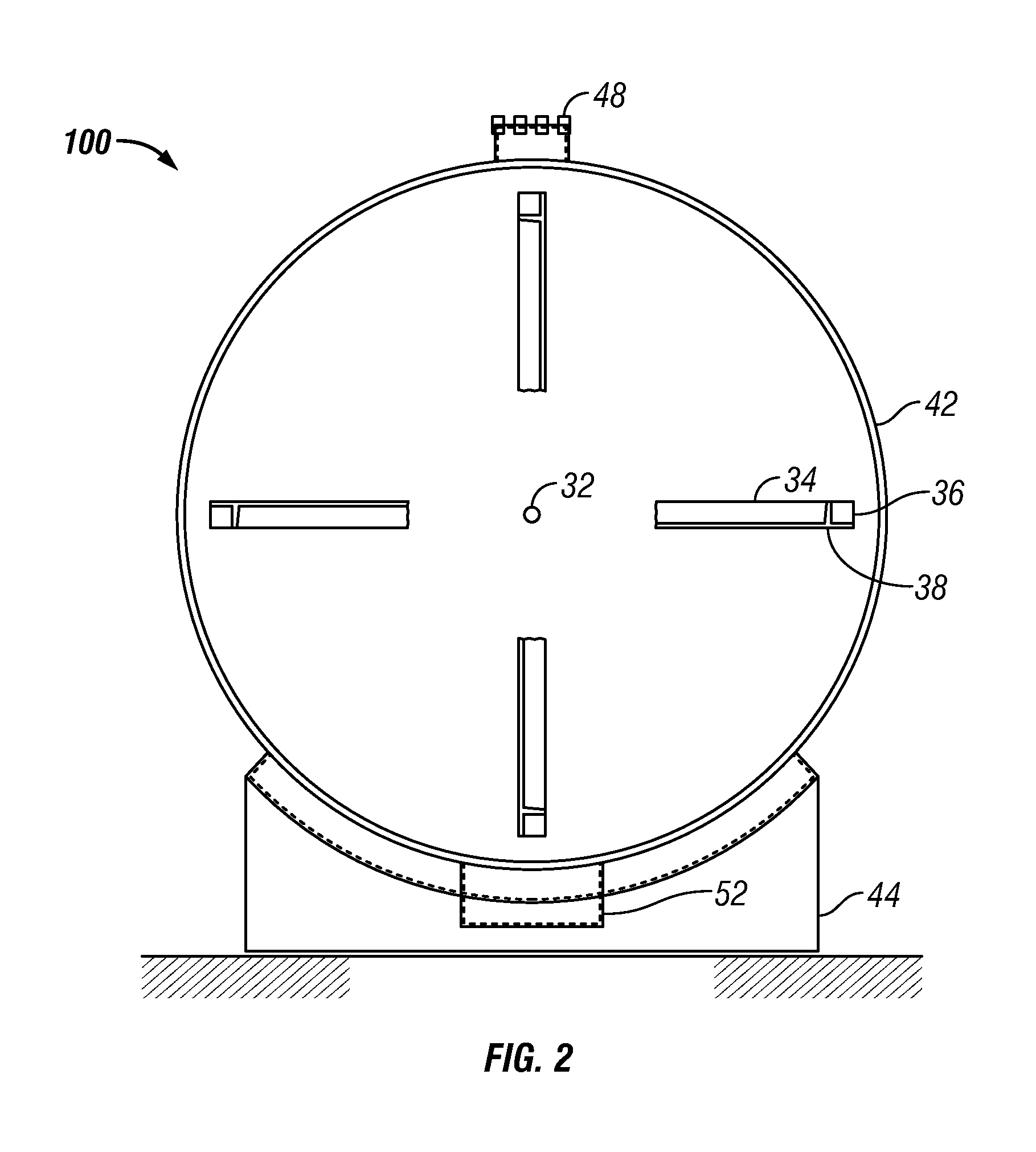System and method for thermophilic anaerobic digester process
a technology of anaerobic digester and thermophilic anaerobic digestion, which is applied in the direction of chemical/physical processes, gas production bioreactors, sedimentation separation, etc., can solve the problems of affecting performance and efficiency, affecting the flexibility of the cover, and accumulating significant and inevitable inorganic and heavy organic matter
- Summary
- Abstract
- Description
- Claims
- Application Information
AI Technical Summary
Benefits of technology
Problems solved by technology
Method used
Image
Examples
Embodiment Construction
[0013]The approach is illustrated by way of example and not by way of limitation in the figures of the accompanying drawings in which like references indicate similar elements. It should be noted that references to “an” or “one” or “some” embodiment(s) in this disclosure are not necessarily to the same embodiment, and such references mean at least one.
[0014]A new approach is proposed that contemplates systems and methods to support an environmentally-friendly, “green” thermophilic anaerobic digestion system. The system includes a thermophilic anaerobic digester as well as various independent modular anaerobic units to generate bio-methane from certain organic energy sources, including but not limited to, among other things, green municipal waste, restaurant and organic waste and effluents from industries such as breweries, grocery stores, food processing plants, granaries, wineries, pulp and paper mills, ethanol and biodiesel plants, fat and animal rendering, agricultural field crop...
PUM
| Property | Measurement | Unit |
|---|---|---|
| temperature | aaaaa | aaaaa |
| temperature | aaaaa | aaaaa |
| temperature | aaaaa | aaaaa |
Abstract
Description
Claims
Application Information
 Login to View More
Login to View More - R&D
- Intellectual Property
- Life Sciences
- Materials
- Tech Scout
- Unparalleled Data Quality
- Higher Quality Content
- 60% Fewer Hallucinations
Browse by: Latest US Patents, China's latest patents, Technical Efficacy Thesaurus, Application Domain, Technology Topic, Popular Technical Reports.
© 2025 PatSnap. All rights reserved.Legal|Privacy policy|Modern Slavery Act Transparency Statement|Sitemap|About US| Contact US: help@patsnap.com



